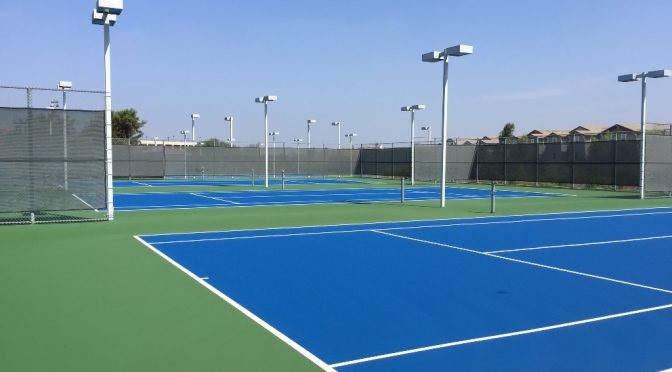Installing a tennis court is a big job, but it can be a great way to add value to your property, especially if you live in an area where tennis is popular. A properly constructed and maintained court can provide many years of enjoyment for you, your family, and your community. Here, we’ll discuss the steps involved in the tennis court construction process, the different types of tennis court surfacing materials available, cost considerations for tennis court construction, maintenance tips for tennis court surfaces, the durability of different tennis court resurfacing options, and what to look for in a professional tennis court contractor.
Steps Involved in the Tennis Court Construction Process
The process of constructing a tennis court begins with a flat area of land or a building. The ground must be level and dry so that the surface can be even and stable. It is important to consider the type of drainage system you will need. The next step is to build a base layer of pea gravel and sand to provide a solid foundation for the court surface. Once this is complete, a three-layer asphalt or concrete surface is laid down, which is then textured and coated with either an acrylic or a polyurethane surface. It is essential to ensure that the surface is level and flat to ensure proper playability.
After the surface is complete, the court must be lined with durable paint designed to withstand the wear and tear of the game. The lines should be visible and easy to follow. Finally, the court must be surrounded by a fence or netting to keep the balls from flying off the court. This will also help to protect the court from the elements and keep it looking great for years to come.
Different Types of Tennis Court Surfacing Materials
There are several different types of tennis court surfacing materials that can be used. The most common are acrylic and polyurethane surfaces. Acrylic surfaces provide a more durable surface and are less prone to cracking and damage from weather. Polyurethane surfaces provide a softer playing surface with more grip but require frequent maintenance and resurfacing. Other materials, such as clay or synthetic grass, are also available.
Professional players often prefer clay courts due to their slower playing surface, which allows for more control and spin. Synthetic grass courts are becoming increasingly popular due to their low maintenance requirements and ability to provide a consistent playing surface. Both clay and synthetic grass courts require regular maintenance and resurfacing to ensure optimal playing conditions.
Cost Considerations for Tennis Court Construction
The cost to build a tennis court varies based on the size of the court, the type of surface chosen, and the project’s complexity. Generally speaking, the cost will range anywhere between $5,000 and $50,000, depending on the size and quality of the court. It is important to factor in the initial investment and ongoing maintenance costs such as resurfacing or repair work.
In addition to the cost of the court itself, other costs include fencing, lighting, and court accessories. Depending on the type of court you choose, you may also need to factor in the cost of a professional installation. It is important to research all of these costs before making a final decision on the type of court you want to build.
Maintenance Tips for Tennis Court Surfaces
Maintaining your tennis court is vital in order to keep it playing at its best. Regular sweeping or vacuuming can help remove debris from the surface. Periodic resurfacing or repair work may be necessary, depending on weather conditions and the amount of usage. Additionally, it’s important to keep the court free from standing water which can lead to moss, algae, and other growths. Make sure that any cracks or holes are fixed as soon as possible.
It is also essential to regularly check the court for any signs of wear and tear. If the court is showing signs of wear, it may be necessary to apply a sealant or paint to protect the surface. Additionally, it is important to regularly check the net and posts for any damage or wear and tear. If any damage is found, it should be repaired or replaced as soon as possible.
The durability of Different Tennis Court Resurfacing Options
The durability of any tennis court resurfacing option depends mainly on the materials used and the amount of usage the court receives. Acrylic surfaces tend to be more durable than polyurethane surfaces, although polyurethane surfaces may require less frequent resurfacing or repair work. Clay surfaces require more maintenance than other options, but they also provide better traction and require less frequent resurfacing.
When considering the durability of a tennis court resurfacing option, it is important to consider the climate in which the court is located. In areas with extreme temperatures, the surface may need to be resurfaced more often than in areas with milder climates. Additionally, the type of play on the court should be taken into account. If the court is used for competitive play, the surface may need to be resurfaced more often than if it is used for recreational play.
What to Look for in a Professional Tennis Court Contractor
When selecting a professional tennis court contractor, it is important to research their experience and reputation. You should look for someone with experience in designing and constructing courts who can provide references from satisfied customers. Additionally, it’s important to make sure that any contractor you choose is properly licensed and insured.


